You can add/remove as many additional inputs as you want to both NOR gates. All you have to do is leave at least one input on the gate to close the positive feedback.
An example of such a "1-input NOR gate" can be the simple transistor inverter. I used it to build a transistor RS latch in front of my students many years ago. In 2008, this scenario was implemented in the lab and described by my students in a Wikibooks story.
The figures below show the evolution of this idea or more precisely, the way of drawing. As you can see, the last three figures are equivalent.

Fig. 1. A noninverting amplifier

Fig. 2. Latch made by a noninverting amplifier

Fig. 3. Latch made by two inverters in loop

Fig. 4. Latch drawn as two cross-coupled inverters in loop

Fig. 5. Latch symmetrically drawn as two inverters in loop (SRAM cell)
Note that all these structures are made by 1-input elements. They are "brutally" driven by applying the input signals to the same inputs where the positive feedback is applied. So there is a conflict between two voltage sources - the circuit outputs and the input sources. The solution is to control the cells by more powerful input sources (as in SRAM)... or to add additional inputs for the input sources (as in flip-flops) to control the cells in a conflict-free way.

Fig. 6. RS latch implemented by 2-input NANDs (Wikipedia)






